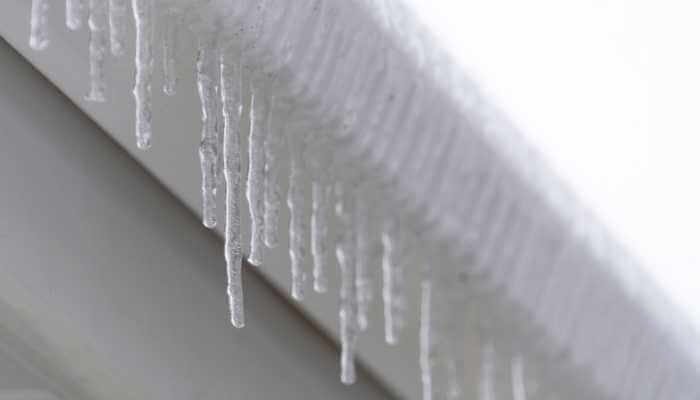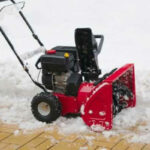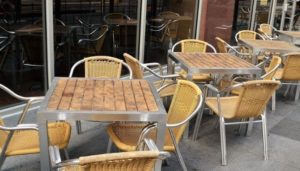When it comes to icicles, I have a love-hate relationship with them. They are beautiful and as an amateur photog, I love capturing them just right in the light of the sun. However, when they’re hanging from the Eaves of a house or from the gutters, they can be dangerous.
The five methods of stopping icicles from forming or remaining on your home’s gutters are good insulation and ventilation, sealing heat sources, using a deicer, removing the snow from the eaves with a roof rake, or using heated cables.
If you want more details about these methods, keep reading!

Why Do You Have Icicles Hanging from Your House and Gutters?
In order to alleviate the issue, you should first understand the cause. Icicles are the end result of heat escaping your home’s attic and melting the underlayer of snow to create ice dams at the eaves where the water once again freezes. As more and more water comes down and over the dam, it refreezes to form the icicles.
Having icicles usually is an indicator that your home is wasting energy through a possible ventilation problem. It’s like a domino effect. First, you have the icicles form, which might be lovely, but it’s dangerous. Then, that ice dam might keep a lot of water on your roof. That water can seep under your shingles and cause water damage.
What can you do to prevent icicles from forming on your gutters and eaves?
I can go over several preventative measures that you can work on before the cold and the snow hits your home. Hopefully, this will at the very least lessen the amount of pre-melt, ice dams, and subsequently, icicles.
Make Sure the Attic Is Insulated and Ventilated Appropriately
Your home should have a proper amount of insulation in the attic. Each home is different, so I would leave this to the professionals. I have helped insulate a previous home, and I paid for it because I’m allergic to insulation. Don’t make the same mistake I made and just hump in without being sure about that.
The proper amount of insulation should keep your attic the same or at a similar temperature as the outside so that it is not hot enough to melt the snow prematurely. If the underlayer of snow doesn’t melt prematurely, it shouldn’t form an ice dam and there should be fewer icicles. Another thing to remember is to cap your attic hatch with the appropriate weatherstripping and foil to keep heat from rising through to the space.
When you insulate your attic the ridge or soffit vents should be left open and clear. This is so air from the outside can circulate through the attic, keeping that air close to the temperature outside and not as hot as the air in your main home.
Seal Any Leaks Around Vents and Chimneys
Another source of heat that can cause the bottom layer of snow to melt can be leaks and fissures around places that radiate heat. Kitchen vents, upward moving dryer vents, flues, chimneys, duct joints, and any other air outtakes need to be properly sealed so that heated air and worse, moisture, don’t end up in the wrong place. All of this heat and moisture should be released outside and not into the attic.
Remove Snow a Few Feet from the Eaves
This may sound dangerous, but it’s not. There are actually specialized tools for this that keep your feet planted firmly on the ground while you rake off excess snow from the eaves. The tool is most commonly known as a roof rake. If you don’t remove substantial ice dams, they can cause the gutters to be pushed from the house, they can loosen shingles, and cause leaks. They need to be removed.
Use Heated Cables
Heated cables can be clipped along the edge of your roof in a zig-zag to prevent any build-up of ice and to melt off the snow before it can form the ice dam. Just be sure these are installed before snow or sleet comes to your neighborhood.
A Homemade De-Icer Might Do the Trick
If you already have an ice build-up, a fun trick that This Old House taught me was to put a deicer (calcium chloride) inside of regular cheap pantyhose and lay the creation on the ice dam. It’s cheap and easy and should melt through the snow into the ice, permanently removing it from the area.
In Conclusion
If the sun is the cause of your melt and your icicles, there’s not much you can do to stop their formation, though using that roof rake can help out. The sun is the natural heat source. All you can work on is the heat source inside of your home. Do that, and at the very least, you should save some money on your energy bill and you might end up with fewer icicles.











